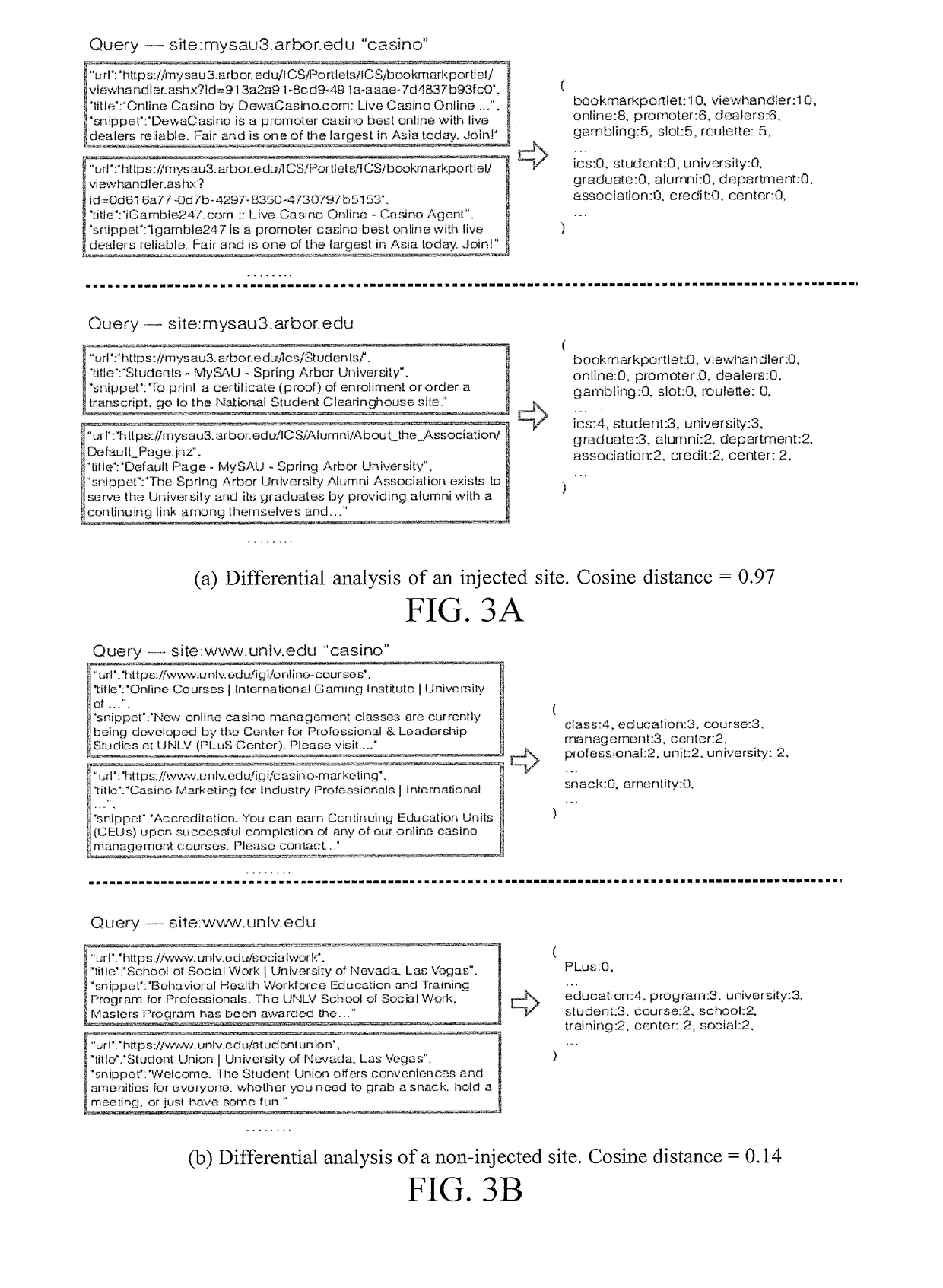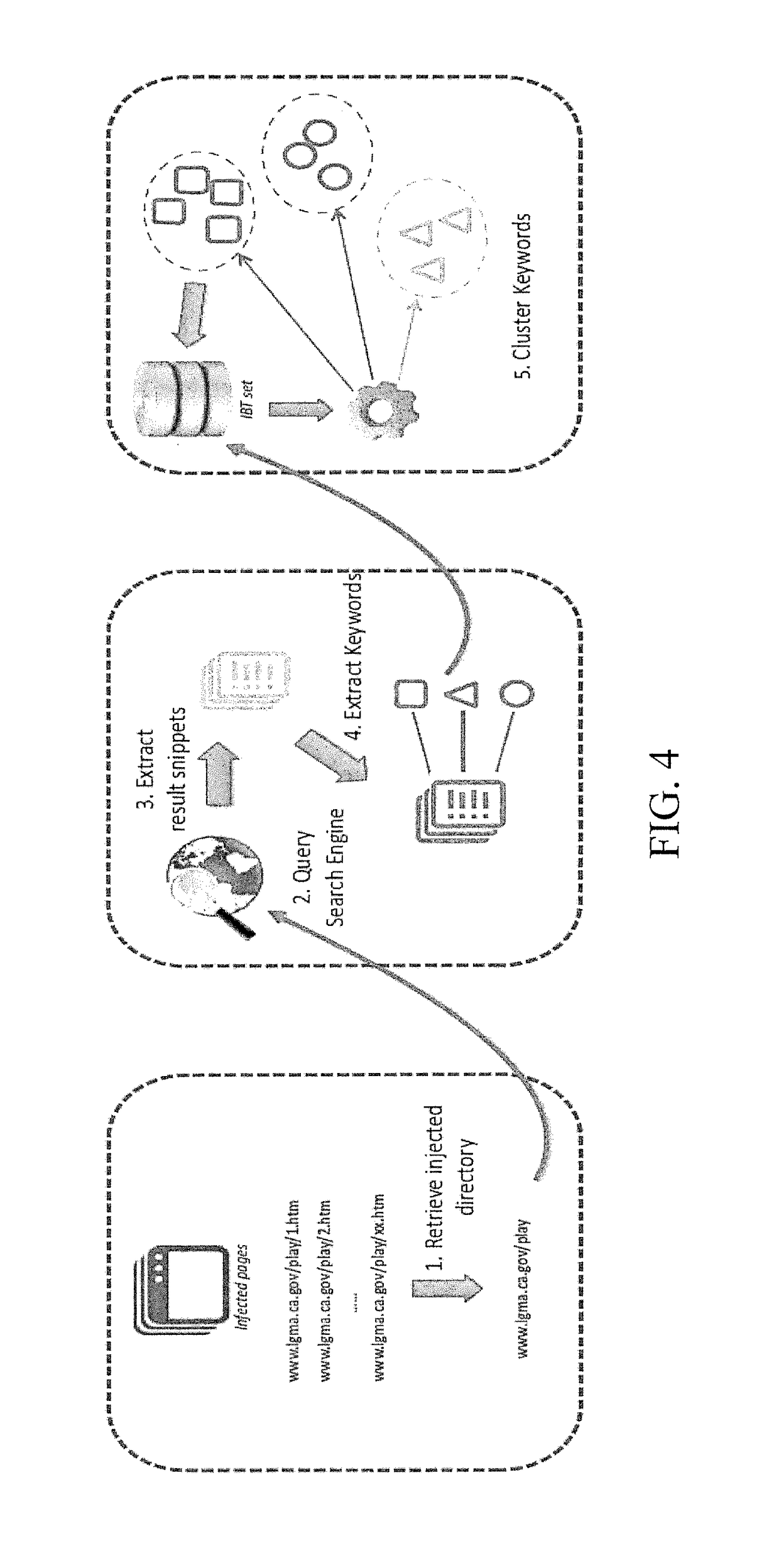Systems and methods for detection of infected websites
a technology for infected websites and systems, applied in semantic analysis, instruments, computing, etc., can solve the problems of significant harm to compromised websites, difficult detection of such infections, loss of reputation, etc., and achieve the effect of reducing the bar to promote infections, effective detection of infected sites, and reducing the rank of alexa
- Summary
- Abstract
- Description
- Claims
- Application Information
AI Technical Summary
Benefits of technology
Problems solved by technology
Method used
Image
Examples
example
[0079]To explain how SEISE works, let us take a look at the example at the beginning of the paper (FIG. 1). For the sTLD .edu, SEISE first runs Semantics Finder 202 to automatically extract keywords to profile sTLD, e.g., “education”, “United States” and “student”. In the meantime, a seed set of IBTs, including “casino”, “pharmacy” and others, are converted into vectors using the word-embedding technique. Their semantic gap with the .edu sTLD is measured by calculating the cosine distances between individual terms (like “pharmacy”) and the sTLD keywords (such as “education”, “United States” and “student”). It turns out that the terms like “pharmacy” are among the most irrelevant (i.e., with a large distance with .edu). It is then used to search Google under .edu, which shows the FQDN stanford.edu hosting the content with the search term. Under this FQDN, SEISE again searches for “pharmacy.” The results page is presented in FIG. 1. As we can see, many search result items (for differe...
PUM
 Login to View More
Login to View More Abstract
Description
Claims
Application Information
 Login to View More
Login to View More - R&D
- Intellectual Property
- Life Sciences
- Materials
- Tech Scout
- Unparalleled Data Quality
- Higher Quality Content
- 60% Fewer Hallucinations
Browse by: Latest US Patents, China's latest patents, Technical Efficacy Thesaurus, Application Domain, Technology Topic, Popular Technical Reports.
© 2025 PatSnap. All rights reserved.Legal|Privacy policy|Modern Slavery Act Transparency Statement|Sitemap|About US| Contact US: help@patsnap.com



